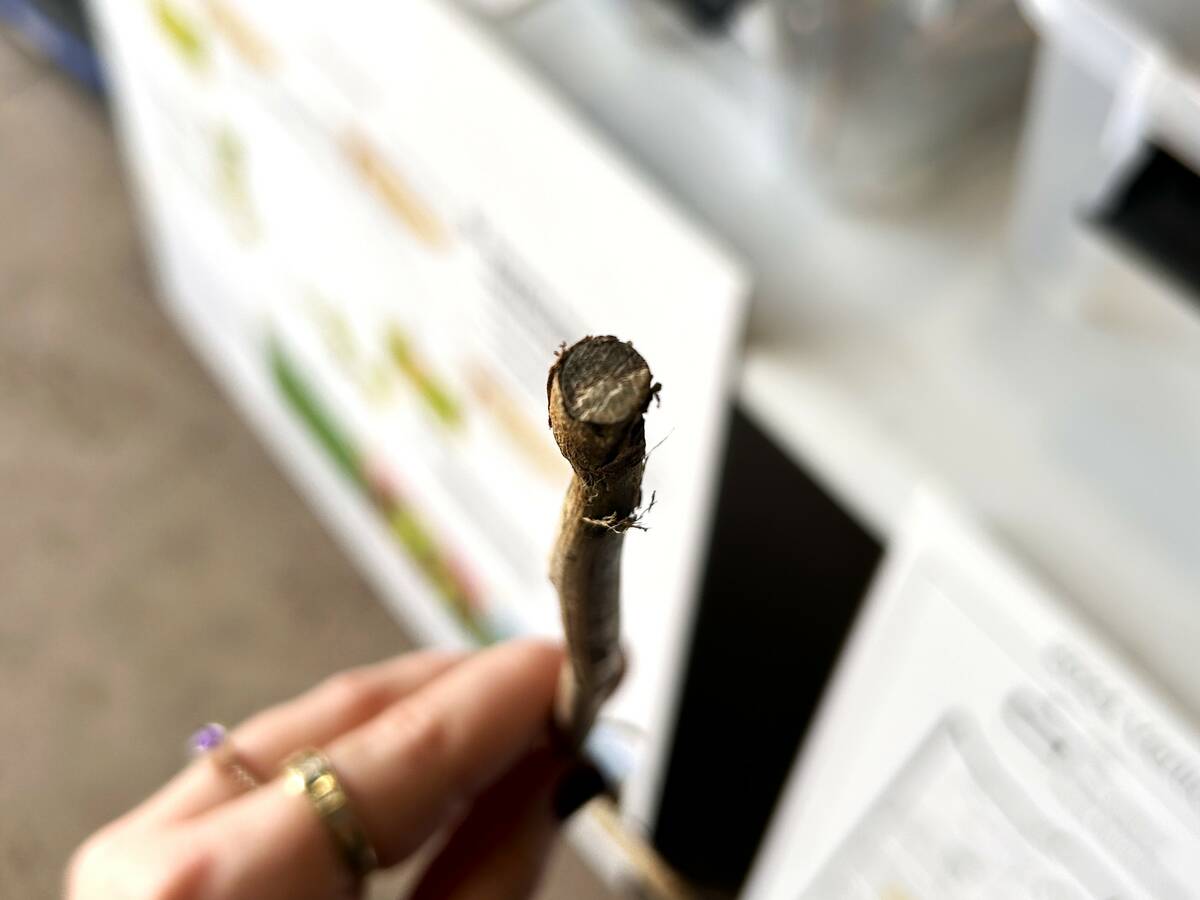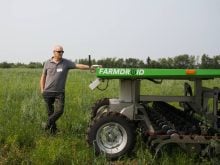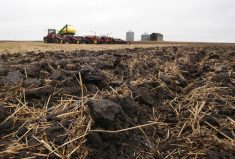The French company Roquette may have kicked off the pea party when it announced a protein-processing facility at Portage la Prairie earlier this year — but it’s no longer the only guest.
In September Academy Award-winning film director James Cameron announced he would be investing in a new multimillion-dollar pea-processing plant in Vanscoy, Sask. As well there is talk of a $100-million pea-processing facility to be built in Moose Jaw, Sask. and other possible pea-processing facilities in Alberta.
Read Also

Manitoba canola embattled by verticillium
Verticillium stripe pressure has been growing in Manitoba, and canola farmers still have precious few tools to protect their crop from the disease.
The news hasn’t upset Roquette’s plans at all, however.
“We know that (the market) can absorb new capacities and we are satisfied that there are other investments, which have confirmed the market trend is robust,” said Pascal Leroy, vice-president of pea and new proteins business line with Roquette.
At the end of September, Roquette held a sod turning for its $400-million pea-processing plant in Portage la Prairie, Man. The plant, which will employ 350 people during construction and 150 people when operating, will need 120,000 tonnes of peas a year. According to Leroy, the project is on track for a tentative opening mid-year 2019.
“At the end of the day what is quite important for Roquette is to be close to the customer, markets, to develop the right grade for all the applications that we serve,” he said.
The pulse protein market is expected to grow substantially as consumer eating habits shift. According to Leroy, the pea protein market is expected to grow by 15 per cent per year.
“Pea protein has value and can be eaten in a lot of meals like sport nutrition, meat (substitutes) and so forth. And it addresses consumer concerns like non-GMO,” he said.
The French starch processor has been in the pea-processing business since 2005, when it opened its first plant north of the French capital of Paris. Since then the company has worked to refine its process for extracting pea protein.
“We have developed a unique process to develop protein with good attribute in terms of nutrition properties and functionalities as well,” Leroy said.
With the expansion into North America Roquette is considering future growth opportunities within the pulse industry.
“You need time to be in a position to master a new crop… so for the time being we are quite happy to work on pea and pea protein,” Leroy said. “Having said that, for sure we are as well looking for new proteins, but again we know Canada has a good potential for that.”
Low costs
Pulse industry groups say the recent spate of announcements is partly due to the region’s growing reputation as a pulse producer, but mainly the focus on peas boils down to the costs of doing business.
“It’s a combination of the tonnage available and then, what is the cost? And given that they’re producing protein isolate, it becomes, what’s the cost per tonne of protein isolate?” said Gordon Bacon, CEO of Pulse Canada.
Yellow peas are currently trading at $8 per bushel (22 cents per pound), according to Prairie Ag Hotwire, compared to Richelea No. 1 lentils at 35 cents per pound, which are grown as well in the Prairies.
“When peas start out as a commodity form in a lower cost per tonne then they become a very interesting crop to fractionate because we as the pulse industry are going to compete with other proteins,” Bacon said.
Rachel Kehrig, director of communications for Saskatchewan Pulse Growers agrees cost factors significantly into choices for processing facilities.
“If you’re looking to put peas into food products or other manufactured goods, which is what some of these plants will be supplying is those ingredients, they’ve got to be cost competitive,” she said.
As well, Kehrig said there has been a lot of focus in the last decade on developing pulse ingredients especially peas.
“Work is being done on lentils and other pulses as well and we expect to see some kind of drive in the ingredient utilization of those as we move into the future. Right now peas are kind of opening that door for everyone,” she said.
Bacon said as well, consumer interests drive the processing industry. There has been an explosion of interest in plant-based proteins as people are looking for gluten- and soy-free products, due to allergies. As well, some companies are interested in GMO free and environmental sustainable products.
“You have companies that are looking for cost advantages relative to other sources of protein and you have people who are looking for novel ingredients,” Bacon said.
Bacon said there is opportunity for other pulse processing. Fababeans have a higher protein content than yellow peas but currently fababean production is much less than peas.
“You’re not going to build a plant for something that doesn’t yet get produced in Western Canada. But I think for sure it’s the combination of price availability and then the functionality of the protein as well,” Bacon said.
















